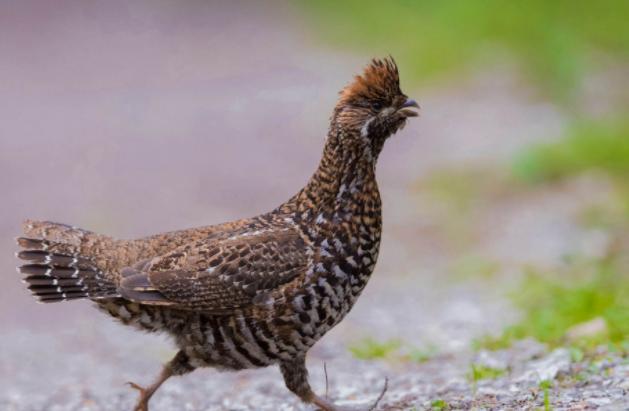The spot-tailed hazel chicken (scientific name: Bonasa sewerzowi) is a unique breed in China, only produced in Gansu, Qinghai, Sichuan and other places in China. It feeds mainly on the scale buds of willows, hazelnuts, leaves and spruce seeds, as well as flowers, inflorescences, leaves, and young branches of other plants. It also preys on small caterpillars, pseudo-walking insects, goldenrods, etc.

Endemic to central China, distributed in Qinghai, Gansu and Sichuan provinces. Native to the Taiga Forest region of the Palearctic boundary, it has only survived in its existing distribution due to quaternary glacial action. The Sichuan subspecies are mainly distributed in songpan, malkang, Pingwu, Qingchuan in northern Sichuan, Kangding to Batang in the west, Baiyu in the northwest and Muli in the southwest. The nominate subspecies are mainly distributed in Gannan County, Hexi Corridor, Gansu, Xilinhe Forest District, Tianzhu County, Yongdeng County, Kangle County, Lintan County, Zhuoni County, Diebu County in the eastern section of Qilian Mountain, and Qilian, Menyuan, Tongren County, Mutual Aid County, Yushu and Banma County in Qinghai Province.
The spot-tailed hazel chicken differentiates into 2 subspecies, namely the nominate subspecies (T.s. sewerzowi) and the Sichuan subspecies (T.s. secunda), the difference between the two is that the Sichuan subspecies has a thicker chestnut head, the back and waist black transverse spots are obvious, and the shoulder and wing covert feathers have significant white end spots; the nominated subspecies have a lighter chestnut color, the back and waist black transverse spots are blurred, and the shoulder and wing covert feathers do not have white end spots or are not obvious.
The breeding season is from May to July. Pairs are mostly formed during vertical migration to the upper part of the mountain in the spring. In winter, the fighting behavior of males occurs in the wintering herd. The overwintering colony gradually decomposes after pairing, and in spring the spot-tailed hazel male will occupy a field in the forest, mark the field by flapping its wings and jumping, and attract the female. By the time the snow in the mountain forest is about to clear, most of the males of the spot-tailed hazel chicken have found their mates. During this period, the male's desire to show off in front of the female is very strong, it will shrug the feathers of the neck, droop the wings, erect the fan-shaped tail feathers, shake the muscles of the whole body, step on the rapid steps around the female bird, and make a rustling sound, so that the whole body to attract the attention of the female bird. At this time, the black feathers in the throat of the male bird are particularly prominent, and the tail feathers are particularly prominent against the background of white spots.